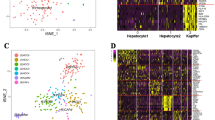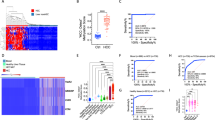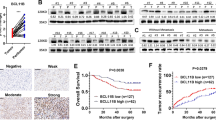Abstract
Aim:
To investigate the anti-cancer effects of p21WAF1/CIP1 transcriptional activation induced by dsRNAs in hepatocellular carcinoma (HCC) cell lines.
Methods:
HCC cell lines BEL7402, SMMC-7721, MHCC97L, MHCC97H, and MHCCLM3 were used. HCC cells were treated with dsP21-322 (50 nmol/L), dsControl (50 nmol/L), siP21 (50 nmol/L), or mock transfection. The expression of p21 was detected using quantitative PCR and Western blot. The effects of RNA activation on HCC cells were determined using cell viability assays, apoptosis analyses and clonogenic survival assays. Western blot was also conducted to detect the expression of Bcl-xL, survivin, cleaved caspase-3, cleaved caspase-9 and cleaved PARP.
Results:
At 72 to 120 h following the transfection, dsP21-322 markedly inhibited the viability of HCC cells and clone formation. At the same times, dsP21-322 caused a significant increase in HCC cell apoptosis, as demonstrated with cytometric analysis. The phenomena were correlated with decreased expression levels of the anti-apoptotic proteins Bcl-xL, surviving, and increased expression of cleaved caspase-3, cleaved caspase-9 and cleaved PARP.
Conclusion:
RNA-induced activation of p21 gene expression may have significant therapeutic potential for the treatment of hepatocellular carcinoma and other cancers.
Similar content being viewed by others
Log in or create a free account to read this content
Gain free access to this article, as well as selected content from this journal and more on nature.com
or
References
Parkin DM, Bray F, Ferlay J, Pisani P . Global cancer statistics, 2002. CA Cancer J Clin 2005; 55: 74–108.
He J, Gu DF, Wu XG, Reynolds K, Duan XF, Yao CH, et al. Major causes of death among men and women in China. N Engl J Med 2005; 353: 1124–34.
Hashem BE, Andrew CM . Rising incidence of hepatocellular carcinoma in the United States. N Engl J Med 1999; 340: 745–50.
Bruix J, Sherman M . Management of hepatocellular carcinoma. Hepatology 2005; 42: 1208–36.
Fire A, Xu SQ, Montgomery MK, Kostas SA, Driver SE, Mello CC . Potent and specific genetic interference by double-stranded RNA in Caenorhabditis elegans. Nature 1998; 391: 806–11.
Eulalio A, Huntzinger E, Izaurralde E . Getting to the root of miRNA-mediated gene silencing. Cell 2008; 132: 9–14.
Paddison PJ, Caudy AA, Bernstein E, Hannon GJ, Conklin DS . Short hairpin RNAs (shRNAs) induce sequence-specific silencing in mammalian cells. Genes Dev 2002; 16: 948–58.
Morris KV, Chan SWL, Jacobsen SE, Looney DJ . Small interfering RNA-induced transcriptional gene silencing in human cells. Science 2004; 305: 1289–92.
Khraiwesh B, Asif MA, Seumel GI, Ossowski S, Weigel D, Reski R . Transcriptional control of gene expression by microRNAs. Cell 2010; 140: 111–22.
Li LC, Okino ST, Zhao H, Pookot D, Place RF, Urakami S, et al. Small dsRNAs induce transcriptional activation in human cells. Proc Natl Acad Sci U S A 2006; 103: 17337–42.
Janowski BA, Younger ST, Hardy DB, Ram R, Huffman KE, Corey DR . Activating gene expression in mammalian cells with promoter-targeted duplex RNAs. Nat Chem Biol 2007; 3: 166–73.
Place RF, Li LC, Pookot D, Noonan EJ, Dahiya R . MicroRNA-373 induces expression of genes with complementary promoter sequences. Proc Natl Acad Sci U S A 2008; 105: 1608–13.
Turunen MP, Lehtola T, Heinonen SE, Assefa GS, Korpisalo P, Gienary R, et al. Efficient regulation of VEGF expression by promoter-targeted lentiviral shRNAs based on epigenetic mechanism: A novel example of epigenetherapy. Circ Res 2009; 105: 604–9.
Huang V, Qin Y, Wang J, Wang XL, Place RF, Lin GT, et al. RNAa is conserved in mammalian cells. PLoS One 2010; 5: e8848
Morris KV, Santoso S, Turner AM, Pastori C, Hawkins PG . Bidirectional Transcription directs both transcriptional gene activation and suppression in human cells. PLoS Genet 2008; 4: e1000258.
Schwartz JC, Younger ST, Nguyen NB, Hardy DB, Monia BP, Corey DR, et al. Antisense transcripts are targets for activating small RNAs. Nat Struct Mol Biol 2008; 15: 842–8.
Garber K . Small RNAs reveal an activating side. Science 2006; 341: 741–2.
Zhong C, Place RF, Jia ZJ, Pookot D, Dahiya R, Li LC . Antitumor effect of dsRNA-induced p21WAF1/CIP1 gene activation in human bladder cancer cells. Mol Cancer Ther 2008; 7: 698–703.
Yang K, Zheng XY, Qin J, Wang YB, Bai Y, Mao QQ, et al. Up-regulation of p21WAF1/CIP1 by saRNA induces G1-phase arrest and apoptosis in T24 human bladder cancer cells. Cancer Lett 2008; 265: 206–14.
Sekiguchi T, Hunter T . Induction of growth arrest and cell death by overexpression of the cyclin-Cdk inhibitor p21 in hamster BHK21 cells. Oncogene 1998; 16: 369–80.
Waga S, Hannon GJ, Beach D, Stillman B . The p21 inhibitor of cyclin-dependent kinases controls DNA replication by interaction with PCNA. Nature 1994; 369: 574–8.
Gorospe M, Wang X, Guyton KZ, Holbrook NJ . Protective role of p21(WAF1/CIP1)against prost agland in A2-mediated apoptosis of Human colorectal carcinoma cells. Mol Cell Biol 1996; 16: 6654–60.
Gartel AL, Tyner AL . The role of the cyclin-dependent kinase inhibitor p21 in apoptosis. Mol Cancer Ther 2002; 1: 639–49.
Shi YZ, Hui AM, Takayama T, Li X, Makuuchi M . Reduced p21WAF1/CIP1 protein expression is predominantly related to altered p53 in hepatocellular carcinomas. Br J Cancer 2000; 83: 50–5.
Hui AM, Kanai Y, Sakamoto M, Tsuda H, Hirohashi S . Reduced p21WAF1/CIP1 expression and p53 mutation in hepatocellular carcinomas. Hepatology 1997; 25: 575–9.
Franken NAP, Rodermond HM, Stap J, Haveman J, Bree CV . Clonogenic assay of cells in vitro. Nat Protoc 2006; 1: 2315–9.
Ito T, Shiraki K, Sugimoto K, Yamanaka T, Fujikawa K, Ito M, et al. Survivin promotes cell proliferation in human hepatocellular carcinoma. Hepatology 2000; 31: 1080–5.
Schwartz JC, Younger ST, Nguyen NB, Hardy DB, Monia BP, et al. Antisence transcripts are targets for activating small RNAs. Nat Struct Mol Biol 2008; 15: 842–8.
Sah NK, Khan Z, Khan GJ, Bisen PS . Structural, functional and therapeutic biology of survivin. Cancer Lett 2006; 244: 164–71.
Ambrosini G, Adida C, Altieri DC . A novel anti-apoptosis gene, survivin, expressed in cancer and lymphoma. Nat Med 1997; 3: 917–21.
Serrano M, Hannon GJ, Beach D . A new regulatory motif in cell-cycle control causing specific inhibition of cyclin D/CDK4. Nature 1993; 366: 704–7.
Harper JW, Adami GR, Wei N, Keyomarsi K, Elledge SJ . The p21cdk-interacting protein Cip1 is a potent inhibitor of G1 cyclin-dependent kinases. Cell 1993; 75: 805–16.
Acknowledgements
This work was supported by grants from both the Shanghai Natural Science Fund (Grant No 08ZR1402400) and the Fudan University Institute of Biomedical Science Opening Fund (Grant No IBS0837). We wish to express our deepest gratitude and indebtedness to Prof Lun-xiu QIN, Zhongshan Hospital, the Liver Cancer Institute, Fudan University, Shanghai, for his generous help throughout the entire course of this project, without which it would not have been possible for us to complete this work.
Author information
Authors and Affiliations
Corresponding author
Rights and permissions
About this article
Cite this article
Wu, Zm., Dai, C., Huang, Y. et al. Anti-cancer effects of p21WAF1/CIP1 transcriptional activation induced by dsRNAs in human hepatocellular carcinoma cell lines. Acta Pharmacol Sin 32, 939–946 (2011). https://doi.org/10.1038/aps.2011.28
Received:
Accepted:
Published:
Issue date:
DOI: https://doi.org/10.1038/aps.2011.28



